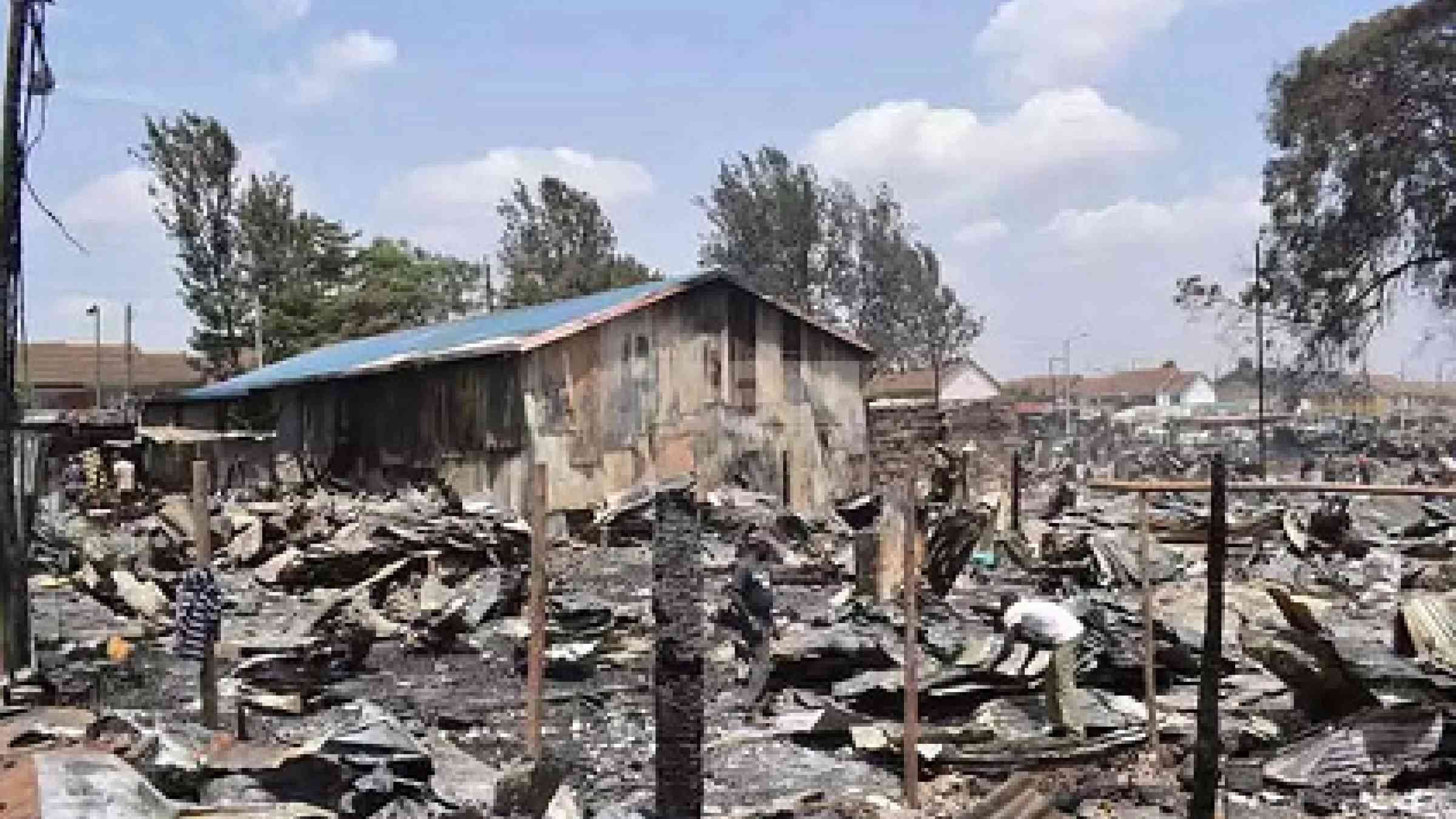How can we restore hope to the world's slum dwellers?

There is much grief and suffering in Nairobi’s Kijiji slum following a fire which has underlined once more the inadequacy of infrastructure and basic services provided to almost one billion people who live in circumstances of unacceptable deprivation in slums around the world.
At the end of January, residents in the Langata area of the Kenyan capital were reduced to using sewage water to try and put out the flames as fire engines ran out of water and their deployment was delayed by poor road access.
To date, four people are known to have died in the inferno which raged for hours through the homes of the city’s poor, some 6,000 of whom are now in emergency accommodation.
As preparations continue for the World Urban Forum which opens in Kuala Lumpur, Malaysia on February 7, this disaster encapsulates many of the issues which the New Urban Agenda, adopted in 2016, is designed to address.
The New Urban Agenda is peppered with references to environmentally sustainable and resilient urban development, the promotion of social inclusion and contributing to end poverty.
It is a complex agenda that requires the engagement of many actors including governments, local governments, civil society, the private sector, NGOs and U.N. agencies notably UN-Habitat, the UN Development Programme (UNDP) and the UN Office for Disaster Risk Reduction (UNISDR).
In a world where more people live in urban centres than ever before, it is also true that more people are being driven to live in urban squalor than ever before, often when forced to leave the countryside because of drought, lack of economic opportunity, lack of access to health and education, and the hope that a big town or city can offer them a better life.
The road to achieving the SDGs runs through our towns and cities and millions travel on it every day in the hope that it will lead to a better, safer future for them and their children.
Needs of poor ignored
I will be speaking at the World Urban Forum on the theme of “Restoring Hope”, and as I prepare for that I cannot help but think of the challenge of restoring hope to those Nairobi families contemplating the charred ruins of their modest dwellings and the loss of all their worldly possessions.
Hope comes in many forms to poor people who live on less than $2.50 per day.
It can come in the shape of a scheme to upgrade their neighborhood by putting in an asphalt road, building a safe school, equipping and staffing a health centre, providing street lighting, or erecting a community centre.
Low-income groups do not have a natural predilection to live in flimsy shacks in rat-infested, crime-ridden neighborhoods bereft of basic services such as safe drinking water and sanitation.
Many local governments make the all too familiar mistake of increasing disaster risk by ignoring the basic needs of low-income groups. Some add insult to injury by bulldozing their homes and providing them with no alternative but to move on to another disaster-prone location exposed to hazards such as flooding, storms, earthquakes, pandemics and pollution.
One can only hope that with the almost universal adoption of the key frameworks that make up the 2030 Agenda for Sustainable Development, and their clear focus on social inclusion, that there is now sufficient political commitment to bring this behaviour to an end in favour of a more enlightened approach to governance and risk management.
By next year, UNISDR expects to see a substantial increase in the number of national and local strategies for disaster risk reduction, as agreed by U.N. member States when they adopted the global plan for reducing disaster losses, the Sendai Framework for Disaster Risk Reduction, in 2015.
Reducing disaster risk and supporting climate change adaptation for low-income groups are essential to the success of these strategies and to achieving the action-oriented New Urban Agenda with its potential to transform the urban landscape.
The World Urban Forum will be an opportunity to assess the momentum for change and how likely it is that we will see concerted action over the next 12 years to achieve sustainable cities populated with thriving communities and people newly liberated from the slum conditions which hinder them from living life to its full potential.
This opinion piece was originally published by Zilient.org